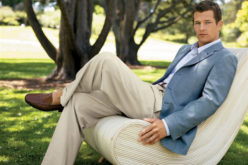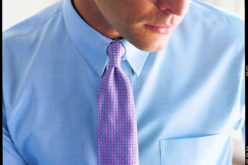A weekly column on men’s fashionQ. My wife just made me sit through much more of the royal wedding and follow-ups than I ever would have wanted to, that being . . . any. Since we have a formal wedding to go to this summer, I was wondering about some of the combinations I saw, everything from regular suits to formal get-ups including a top hat. My question is what is the correct dress for a summer wedding?
A. Even in the “realms” of weddings that do not include royals, international attention, and elite standards of pomp and circumstance, there absolutely are standards, and you are right to insure that you are adhering to them . . . or your wife is, if she made you ask as well as watch. That said, a formal wedding has specific meaning, which varies depending on which variety of formal the hosts mean, how closely they are adhering to the rules, the time of day, and also the time of year. For every man attending a wedding, even a non-formal one, these are important considerations.
As we move to prime wedding season, it is worth my explaining the whole spectrum. Here are the most relevant elements about wedding dress etiquette: 1.] The degree of formality of the wedding as called for on the invitation, 2.] The time of day, and 3.] The time of year.
DEGREE OF FORMALITY OF THE WEDDING This information usually appears on the invitation, such as White Tie, Black Tie, Black Tie Optional, or, as for the recent Royal Wedding between Prince Harry and Meghan Markle, Uniform, Morning Coat, or Lounge Suit. Each of these formal options is quite different from the others and each one has its own requirements. And when we leave the formal categories, Casual Attire is yet another possibility.
In todays normal conversation, tuxedoes have basically become synonymous with Formal Wear for men. But, in truth, Formal Wear means more than just a tux. It includes such variations as: white tie and tails (the most formal); a tuxedo (the least formal); and the rather rare, elegant daytime option, known as morning dress (which is somewhere between the other two).
White Tie, also called white-tie-and-tails, consists of a black formal suit with a long swallowtail coat, white waistcoat (vest), white wing-collar (not wingtip!) shirt, white cotton piqué bow tie.
Black Tie is a specific type of formal dress; when it appears on an invitation, it means that a tuxedo is required. Men should wear, with their black (or midnight blue) tuxedo, a white pleated-front formal dress shirt, black bow tie, cufflinks, braces (suspenders) and no belt.
Morning Dress is a special look seen primarily among the social elite. It consists of a black or gray cutaway tailcoat with a single-button closure and peak lapels; usually gray striped trousers; waistcoat (vest) that is often double-breasted; white formal dress shirt with turned-down collar; long four-in-hand tie, usually in silvery gray or a pastel. Several optional accessories include a top hat, white pocket-handkerchief, gloves, and a cane.
Black Tie Optional eases up on some of the rules and standard wedding codes. It allows you to take some liberties, especially with your formal accessories, or just to choose to wear a dark suit.
Lounge Suit. Basically, a lounge suit is what the British call a suit. If the royal invitation were written in America, it would have called for Dress Uniform, Cutaway, or Suit. So, dont be confused; the word lounge has nothing to do with informal at-home lounging attire.
Similarly, Casual Attire for a wedding most definitely does not mean jeans and a T-shirt. It can mean anything that shows proper respect for the occasion, from a medium-dark suit or summer seersucker, to a blazer and dress pants. Overdressing is a better choice than under-dressing for a wedding. Your hosts will appreciate your extra effort. While some men might like to go without a tie, I recommend that you wear one. If it turns out that most of the guys arrive tie-less, it is simple to take yours off, unbutton your top shirt button, and tuck the tie in your pocket.
TIME OF DAY Oddly enough, this is a very crucial element in formal wedding attire. Certain clothing is considered definitely wrong for any wedding that takes place in the daytime (which usually means before 6:00 p.m.) A tuxedo (correctly called an evening suit) is designed to be worn as eveningwear, and, thus, a daytime wedding is traditionally too early to wear a tuxedo.
In the most elegant circles, such as the Royal Wedding, when the wedding is too early for a tuxedo, the traditionally correct thing to wear is morning dress.
TIME OF YEAR White-tie dressing and morning dress do not vary with the time of year, but summer black-tie dressing does allow a man to choose a white dinner jacket and black formal trousers instead of a black tuxedo. A black bow tie and all the other black-tie accessories remain the same.
A mans clothes are supposed to help him feel self-confident. Know this: Mens formal wear offers yet another advantage. It makes a man look debonair and sexy. Just ask any woman.
When you know you are dressed right and look your best, you can relax and have a great time at a summer wedding. Have fun!
Please send your questions on men’s dress and grooming to
Male Call:
Lois.Fenton@prodigy.net
Categories:
Male Call










